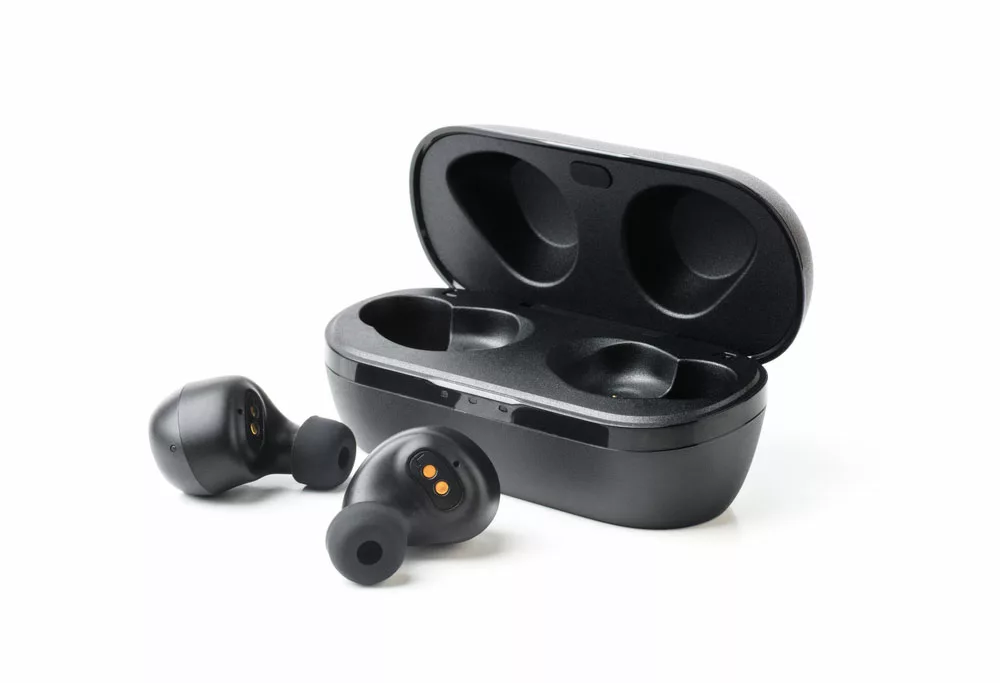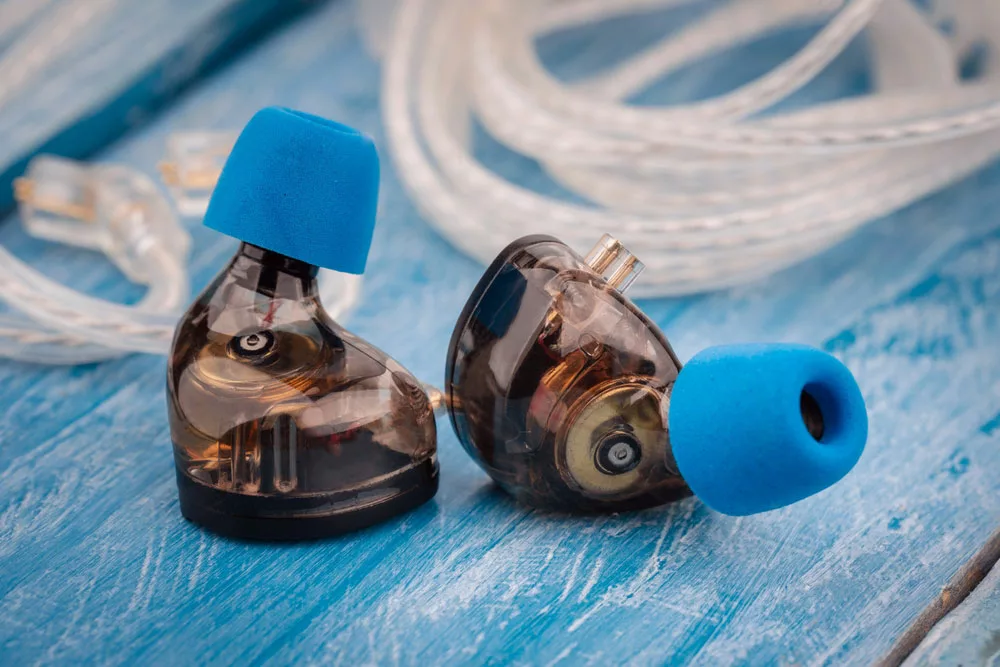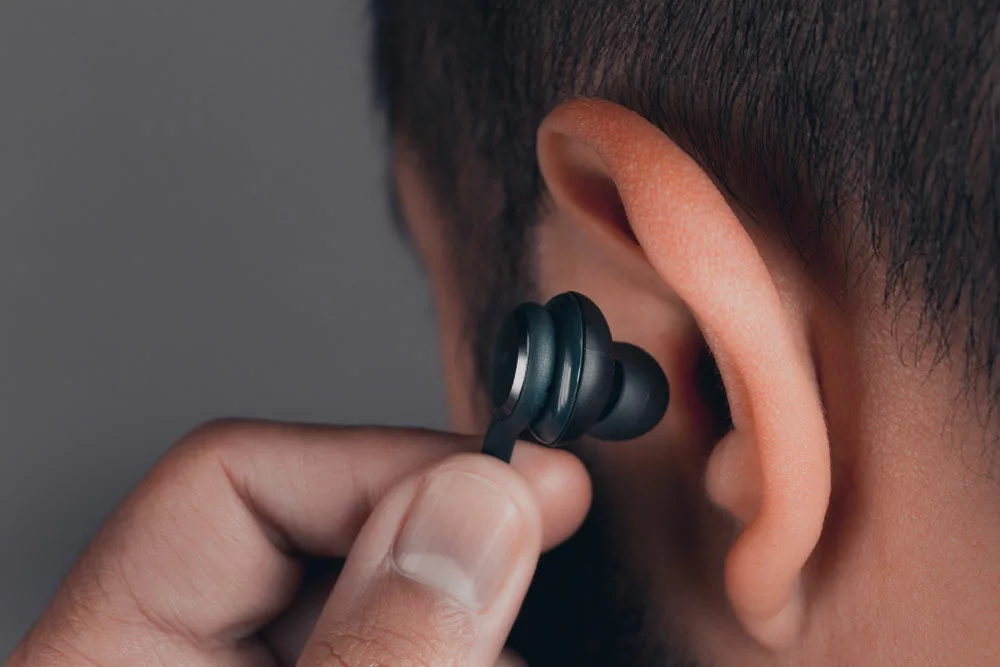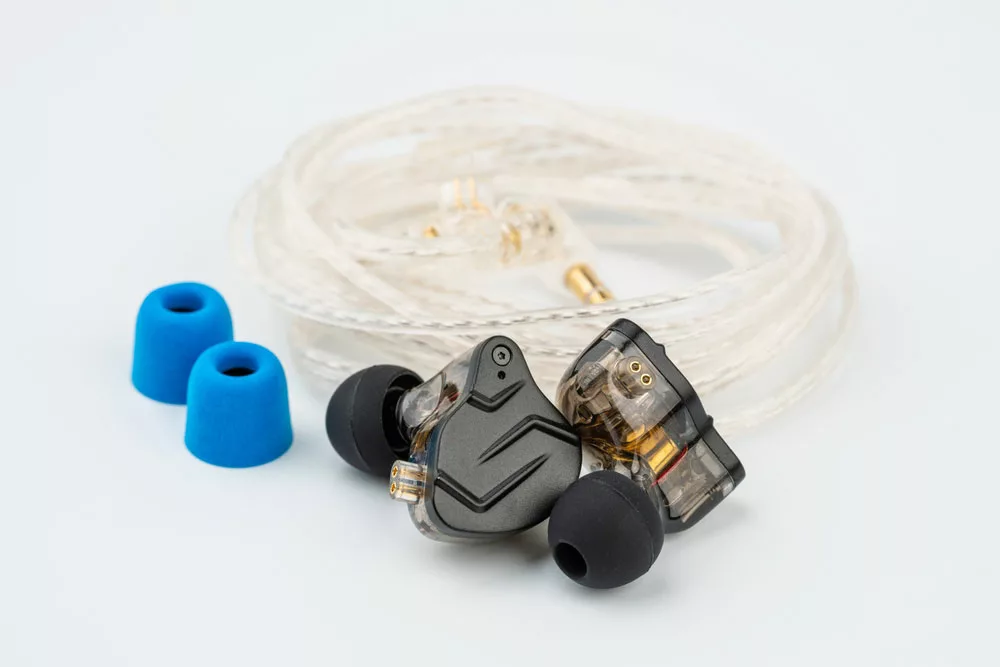Regarding personal audio, there’s always been a debate among enthusiasts on which is better, earbuds vs. IEMs. To bring you much closer to home, think of it like the age-old debate about Android and iOS.
But first, forget about the wacky world of cables; where exactly is the line that separates the two?
A common consensus is that IEMs are (almost always) more expensive than earbuds. But we know it’s not just about the money, as it’s seemingly obvious that the technical differences go far beyond their price tag.
Which is which, and which one should you get?
Table of Contents
- What are Earbuds?
- What is an IEM?
- IEMs and Earphones: What Are the Differences?
- Earbuds and IEMs: Key Factors to Consider
- IEM vs. Earbuds: Which Is Better?
- Frequently Asked Questions
- Wrapping Up
What are Earbuds?

Wireless black Bluetooth earphones
Earbuds are in-ear headphones that fit in your ear but rest outside the ear canal. That’s the primary difference between IEMs and earbuds—you insert IEMs directly into the ear canal and place earbuds on the outer ear.
But don’t be fooled.
Some earbuds look too similar to IEMs and may trick you into thinking they are IEMs if you don’t examine them closely. Earbuds mostly feature a simple design typically molded with hard plastic.
This makes them lightweight and very convenient to carry around for on-the-go listening.
What is an IEM?
An in-ear monitor (IEM) is a personalized audio device that allows you to listen to high-fidelity audio. They are very popular among audiophiles, sound engineers, musicians, and home audio enthusiasts. You have probably seen them many times with artists performing on stage at live concerts.
By design, IEMs produce exceptional sound quality and detail with precision-tuned drivers and state-of-the-art acoustic technology.
They consist of a pair of driver chambers and are topped with silicon or foam tips for a secure fit inside the ear canal.
Most IEMs come with an over-the-ear grip for a more secure and comfortable fit, making them a popular choice for workout sessions.
IEMs and Earphones: What Are the Differences?

In-ear monitor on a tablature background
Let’s take a closer look at some of the features offered by both.
Sound Quality
For better sound quality, you most definitely want to go with IEMs, as they come decked with enhanced features for optimal performance. They use a combination of both active and passive noise cancellation to provide superior noise isolation hence better sound quality.
It’s worth mentioning that personal preference also plays a key role here. Earbuds typically have a V-shaped sound signature. They tend to emphasize the bass and treble frequencies while recessing most mid-frequencies.
Volume
IEMs tend to have a better seal in the ear canal, which helps to isolate sound and prevent outside noise from interfering with your listening experience. This isolation can also allow for a higher volume level without causing discomfort or damage to the ears.
What’s more, IEMs often have a more accurate frequency response, resulting in a more detailed and balanced sound at higher volumes.
On the other hand, earbuds typically fit less snugly in the ear and might not offer as much noise isolation. This makes it more challenging to play loudly without irritating or harming your ears.
This is not always an advantage.
You may need to be aware of your surrounding, especially during those morning runs along the road, making earbuds a good choice for such scenarios.
Driver Technology
The type of driver technology used plays a key role in the listening experience you’ll get with these audio devices. IEMs typically use balanced armature drivers. They may struggle to produce a deep base due to their small size but compensate for that in advanced tuning.
If you are looking for a wide range of sound dynamics and clearer vocals, IEMs are your go-to. But this is subjective. Some people prefer a punchier bass, which often comes with dynamic drivers.
Earbuds mostly use dynamic drivers, but this comes at a cost. You’ll get your bass right, but most use single drivers for all frequency ranges, which tends to cause linear distortion at high volumes.
IEMs can also feature hybrid drivers for optimal sound quality.
Noise Isolation

Man with earphones in the ear
IEMs provide better noise isolation, drowning out all ambient noises, as they fit snugly inside the ear canal. Those willing to spend more can get IEMs with custom-molded tips (also known as CIEMs). These silicon or memory foam tips offer a proper seal and enhanced noise isolation.
However, some people have complained of ear discomfort and fatigue with IEMs for extended periods of use in the past.
Earbuds and IEMs: Key Factors to Consider
Now that you know how different earbuds and IEMs are, it’s important to consider some things before making a purchase. Your personal preference and your needs can help a great deal.
Let’s see some of the factors you can consider.
Comfort
IEMs are more ergonomic because they must be fitted into the ear canal. Although IEMs are more ergonomic, you may find earbuds more comfortable.
Earbuds are also easy to put on and pull out of your ear during brief listening sessions.
Secure Fit
IEMs are less likely to come off your ears since you can strap them around your ear lobe. If you are looking for the perfect gym companion, then IEMs are your best option. This may not be a major concern, especially if you want quality.
Durability and Build Quality
Considering the build quality of most of the brands in the market today, IEMs tend to last longer. Most premium brands have a custom build and quality material finishes, typically acrylic or resin fused with aluminum/steel.
Don’t get this wrong; this doesn’t mean there are no good earbuds. Generally speaking, earbuds tend to wear out more quickly.
IEMs have detachable cables too, which means damaged cables don’t determine the lifespan of the IEMs.
Wired or Wireless?
With advancements in Bluetooth technology, most earbuds are completely wireless nowadays. You may need to slap an external dongle on your IEMs to go completely wireless, but this shouldn’t deter you from reaping all the goodness IEMs offer.
IEM vs. Earbuds: Which Is Better?

Custom in-ear monitors or IEMs
You’ll hear this a lot, IEMs are better than earbuds. Get this, though. Most IEMs have better noise isolation, sound quality, and detail. If this is what you are looking for, your best bet would be to go with IEMs.
However, there are some earbuds with superior quality sound and detail. You can consider getting such for quick and on-the-go listening.
Frequently Asked Questions
Are IEMs the same as earbuds?
In-ear monitors may be similar to earbuds, but they are not the same thing. IEMs have tips inside the ear canal, while earbuds rest on the outer ear. Audiophiles and sound experts mostly use IEMs as their preferred high-fidelity audio devices.
Are AirPods Pro wireless IEMs?
Despite their price point, AirPods Pro are not true ‘wireless IEMs.’ Audiophiles think they are not studio-grade IEMs, at the very least.
Are IEMs more comfortable than earbuds?
IEMs can become rather uncomfortable if you use them for extended periods. But this depends mostly on you as an individual.
Wrapping Up
It’s easy to confuse what IEMs and earbuds are. Even manufacturers aren’t consistent with their labels anymore. But generally, most brands produce IEMs for professional music production and acoustic engineering, making them expensive. They are perfect if you are looking for sound quality, superior noise cancellation, and detailed audio.
Most designers make earbuds for personal use (for the masses), which makes them cheaper by comparison.
